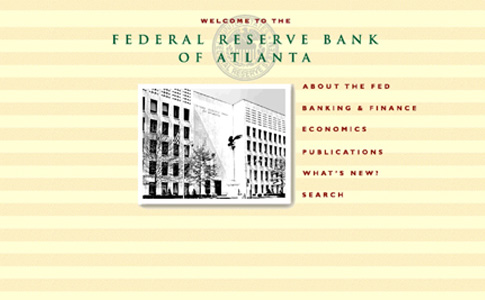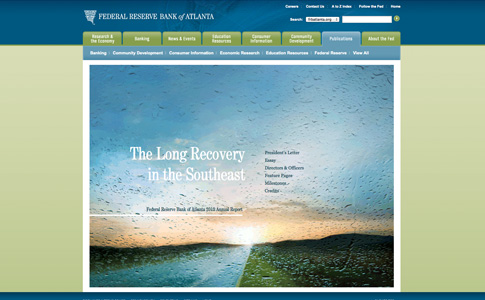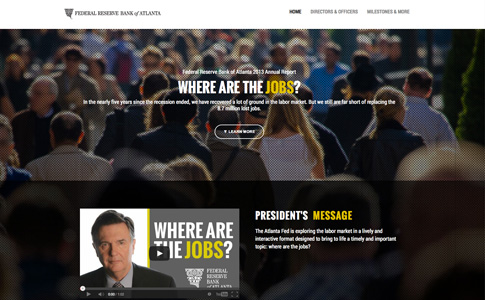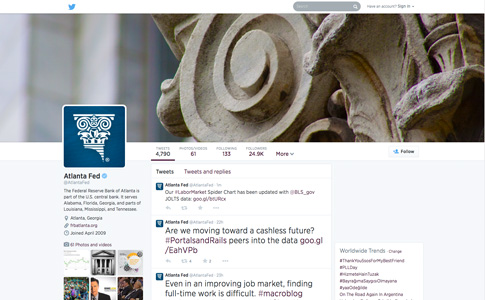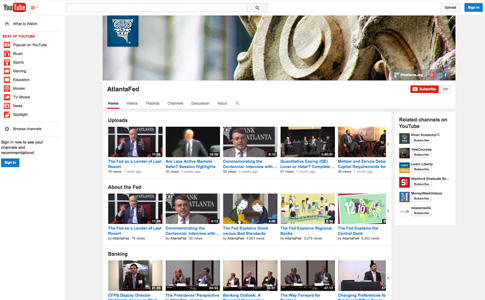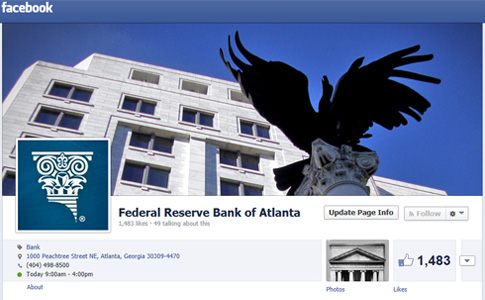In 1989, few would have guessed that the Atlanta Fed would one day communicate with its audiences in 140 characters or less.
Indeed, technology has revolutionized the way society communicates, and the Atlanta Fed is no exception. Like most organizations, the Atlanta Fed at one time produced a dizzying array of print publications, including research papers, circular letters, newsletters, magazines, and more. Today, virtually all of that content has gone digital. In addition, the Bank has adopted new forms of communication, enabling it to connect instantaneously with an ever-growing audience.
While the format and delivery have changed dramatically, the purpose behind the Atlanta Fed's communications remains the same—that is, to help the public understand the Fed's role in the economy.
A new frontier
The shift from print to digital began in 1995, when the Atlanta Fed established an online presence at frbatlanta.org. Then, speeches and printed publications accounted for the bulk of the Bank's outreach efforts. Over time, those items migrated to the web, where many of them remain, including Financial Update and EconSouth. Since then, the Atlanta Fed has introduced a host of engaging and inventive content, including podcasts, videos, and dynamic charts. Today, the Bank's website is a top resource for information on the economy, financial markets, and the Fed's role in both of them.
The 2008 launch of macroblog placed the Atlanta Fed firmly in the Web 2.0 era, a period in which websites moved beyond static pages to more engaging web experiences. Originally begun as the independent blog of Atlanta Fed research director Dave Altig, macroblog presented a fresh way to share the Bank's perspective on the economy, monetary policy, macroeconomics, and more. The blog caught on quickly, and the Bank soon launched three more blogs—SouthPoint (examining regional economics), Portals & Rails (focusing on payments risk), and Real Estate Research (exploring residential real estate).
From there, it was only a matter of time before the Atlanta Fed waded into social media. Outlets such as Twitter, Facebook, and LinkedIn now enable the Bank to engage directly and instantaneously with the public.
Of course, the Bank's interactions with the public extend beyond its web and print communications. The last 25 years have also seen a dramatic increase in the number of conferences and events hosted by the Bank and its branches, from economic education workshops to its flagship annual financial markets conference.
Atlanta communications part of a broader shift
This evolution in the way the Bank shares information reflects more than rapidly changing communications technology. Indeed, the changes have unfolded against a broader shift in the way the Federal Reserve communicates with the public. Gone are the layers of secrecy surrounding the U.S. central bank's monetary policy actions. Today, the Fed is more open and transparent than at any time in its past. Since issuing its first post-meeting policy statement in 1994, the Federal Open Market Committee has provided ample information about its policy actions and intentions, including quarterly press conferences by the Fed chair. These changes reflect the Fed's role as a public institution, as well as the recognition that clear communications are an effective monetary policy tool.




